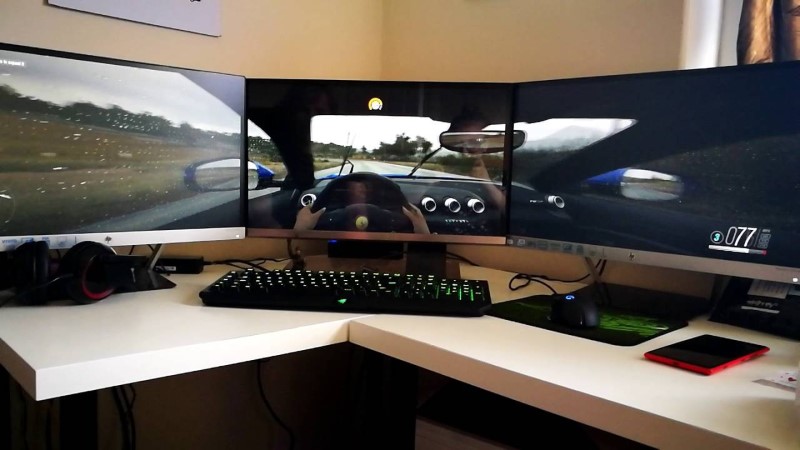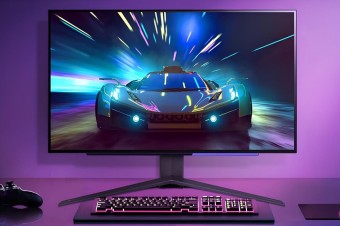How to connect a second monitor to a laptop or PC?
We independently test the products and technologies that we recommend.

Duplicate, extend or multi-monitor
Modern computer operating systems Windows, macOC and Linux (we will give setup tips using the example of the first one) support the simultaneous connection of multiple monitors in two modes: image duplication and desktop extension. The first option is useful if you need to display the same picture on several screens at the same time, for example, in a store or cafe. Also, duplication is often used when connecting a laptop to a home TV to broadcast movies or games (see the article "How to connect a laptop to a TV?").
The second option — extension — is used when using multiple monitors by one person sitting directly at the computer desk. This allows you to display windows of different applications on each of the monitors.
 |
When you connect a second monitor to a computer or laptop (in the second case, you may need to press the appropriate key or key combination), the picture is duplicated by default. But in the case of monitors with different resolutions (1080p, 900p, 768p), this is inconvenient, since the image on the second one will be fuzzy. To switch to extended mode, right-click on the Windows desktop, select the menu item "Display Options", and then "Extend". Now each monitor will be set to its native resolution.
In addition, there is a third mode — the creation of a single software multi-monitor, which is used for full-screen games with three-dimensional graphics. It is implemented through not an operating system, but proprietary technologies from graphics card manufacturers — NVIDIA Surround and AMD Eyefinity. The setting is carried out in the GeForce Experience and AMD Crimson (old name Catalyst) programs, respectively. Integrated Intel graphics does not support gaming multi-monitors, only the usual duplication and expansion.
 |
Digital and analogue video interfaces
The video outputs on the motherboard or discrete graphics card may not match the video inputs on the monitor. But in most cases, this problem is easy to fix. So, HDMI, DVI and DisplayPort digital interfaces (as well as their Mini versions) are converted to each other using cheap passive adapters. To convert a digital HDMI output to an analogue VGA input, there is an active adapter of the same name. Older discrete graphics cards had a DVI port paired with VGA, while newer ones, as well as motherboards, did not.
 |
How many monitors maximum?
Modern discrete graphics cards for PC support simultaneous connection of motherboards of three monitors, and top models — six (see the article "How to choose a graphics card for a computer?"). Integrated graphics can output less than two simultaneous video signals, even if there are three video ports on the motherboard (see the article "How to choose a motherboard for a computer?"). Some modern motherboards allow a discrete and integrated graphics card to work simultaneously (activated in the BIOS menu). This makes it possible to connect a total of five to eight monitors.
 |
Laptops, despite having two video outputs (HDMI and VGA), support only one external monitor. But you can still connect the second one using a USB graphics card, which, for example, is produced by Inno3D.
Monitor from smartphone or tablet
The second monitor is not cheap, and often not needed all the time, but only occasionally. Therefore, a good economical solution to the issue is to turn a smartphone or tablet, which almost everyone has, into a small display for a PC.
 |
This is done using the Splashtop Wired XDisplay application, versions of which exist for Android, iOS, Windows and macOS. The free demo version of the application has a limit on the duration of one session (only 5 minutes), after which you have to reconnect. Therefore, we recommend that you still spend $5 on the full version.
Splashtop Wired XDisplay must be installed on both a smartphone or tablet (client side) and a computer or laptop (server side). At the same time, the client and server devices are connected to each other with a USB cable. It is better to set the screen resolution smaller, for example, 1280x720 or 800x600 in general, otherwise the fonts will be unreadable small. For greater convenience, we recommend buying or making a stand for a smartphone or tablet so that the second monitor is parallel to the first.
Maximum image quality in the smallest form factor.
We broadcast the image from the laptop to the TV via cable and "over the air".
A compact alternative to thermopot with the ability to heat water to the desired temperature.
A reasonable compromise between size and functionality.
Consider what types and classes of food are, what to look for when choosing food for a four-legged friend.

















